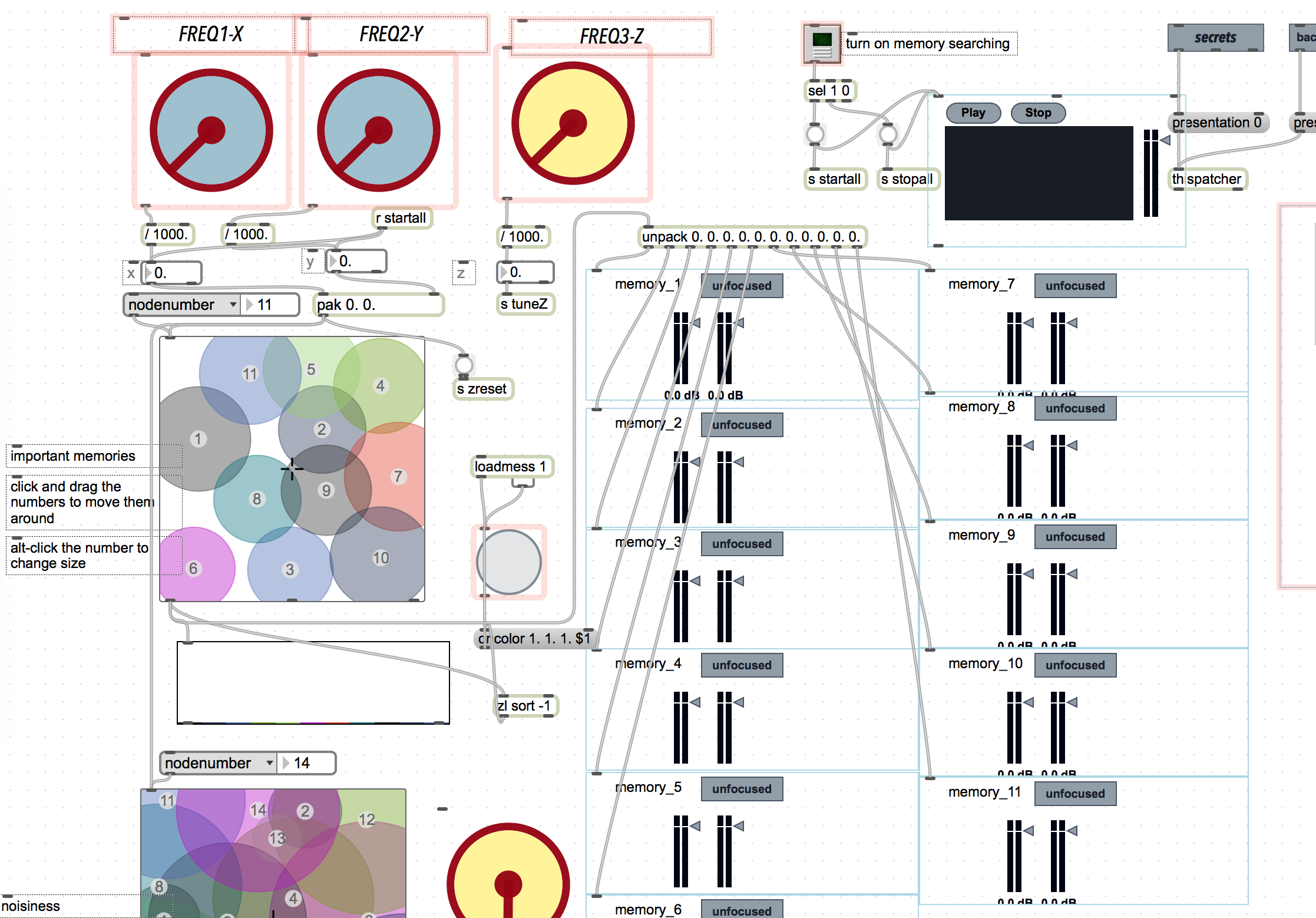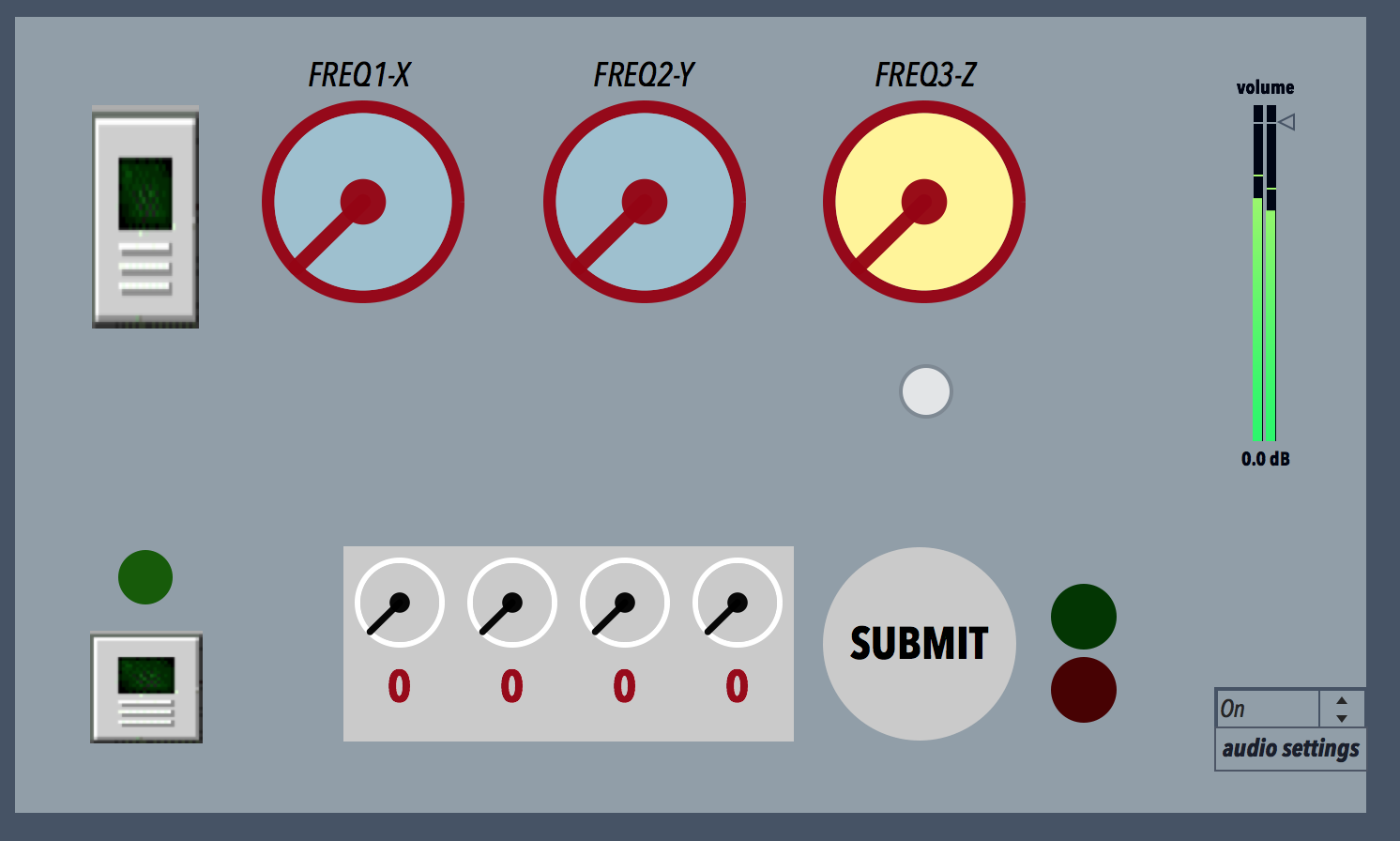Killcode: Or, an unfinished collaboration
The short version: here’s a prototype audio game that Simon Flesser and I made a while back. Download it and have a play and let us know what you think!
—
The long version:
Some time ago I was able to spend a really amazing week with an artist who I greatly admire – Simon Flesser from Simogo. Simon and Gordon’s games are wonderfully crafted interactive stories with an obsession for detail and an uncompromising aesthetic approach that has resulted in widespread acclaim.
Simon and I had often spoken about collaborating on something, but we didn’t really know what form that would take. I think many of our early ideas revolved around emotionally powerful audio and lovely hardware – in retrospect perhaps Simon was looking to explore a world of game design away from a screen, and I was looking to integrate narrative into the objects I had been building. In any case, we both blocked a few days out in our calendars and Simon booked a trip to Scotland.
In between going to see Songhoy Blues and discussing media representations of rapping teachers, Simon and I worked on some ideas. We were both somewhat in between projects, and both in the incredibly luxurious position of being able to throw around ideas for a few days. So on his first day in Edinburgh, Simon sat in a chair in my ramshackle studio and said “What are we doing here?”

My studio, around the time of this project, set up for the filming of Michael Brough’s 868-HACK trailer
That question led to a long set of discussions about what we were interested in; what would we make if we had no restrictions, and (more importantly) what did we want to explore creatively? We quickly started to focus on the idea of making a sound game – a video game with no screen, if you will. This leads to a number of interesting restrictions, particularly when making something with a strong narrative element. With no screen to look at, how do you design the interactions? How do you make something where the player feels in control and aware of their place within the story, whilst still holding back enough information and retaining enough mystery for it to feel like a game? There are a number of good examples of this, perhaps the most famous recently being Papa Sangre, and here in Scotland the wonderful Other had many audio-only features as well. For an incredibly exhaustive list go to audiogames.net.
But stepping outside the mobile gaming bubble for a second, audio-only experiences shouldn’t strike us as all that groundbreaking. Radio dramas, after all, preceded TV dramas by several decades – and oral histories were the media format of choice for many cultures for millennia before that.
Mixed in with all of these concepts was a desire to make something physical, something with movable parts that you hold and move and twist and love. Perhaps we were both tiring of working on games for touchscreens – the last few games I made with Lucky Frame can attest to that. From a music technology perspective this is no anomaly, with ’boutique’ hardware and opaque modular synth systems now becoming positively mainstream. In many ways the most exciting game development happening now, in my opinion, is of the ‘alternative controller’ variety, where designers are reimagining the physical methods for playing games. These trends could be seen as something of a rejection of the omnipresent touchscreens and standardised controllers that pervade mainstream media culture nowadays, and our discussions certainly reflected that.
Out of this jumble of concepts grew an idea for a game built into a custom-built box covered in an array of dials, buttons, lights, and switches. It would have a headphone jack, but no screen. The game would take place entirely within a sound world, with the controls at the player’s fingertips. I think we were imagining something like an old Ham radio transmitter combined with an Enigma machine, which informed the general aesthetic of the storyline that Simon developed.
When we started sketching out the story concept we jokingly titled it “Killcode”, with the idea that we could change the name eventually. As often happens in this type of process, we never managed to find a better name and the name stuck. The story itself borrowed from mid-century spy novels and TV shows, with some cold war-era espionage and intrigue thrown in for good measure. The as-yet-unbuilt box became known as the “Telemental Remote Operating System”, and we mapped out an outline for how the game would work.
The core mechanics of the box, as we imagined it, were three dials or sliders for tuning into radio frequencies, a couple of light-up buttons, and a four digit code input system. The game would be divided into chapters, each of which would revolve around cracking a code and sending it back to headquarters. We saw this as the rough basis for a game-like interaction which could then be extended in different ways based on how the story would progress.
With this structure in mind, we decided that the best approach would be to make a software prototype which would emulate the physical box. After a few rough drafts, Simon wrote a text for the first “chapter” of the game complete with world building, game clues, and a wonderfully chilling introduction. The incredible Roxana Vilk, one of my favourite voices (and people), very kindly agreed to play the main character, and the rest of the voices were played by myself and an assortment of friends and family (thanks Kate, Jenny, Fraser, and Jeannette!). Thanks also to Pete Vilk for the extra recording work!
The sound design was super fun to do. I used my analog synth for the bleeps and bloops, found an old broken radio to make a library of static, and delved into my collection of field recordings, including one of my favourite ever – the sound of wind rushing through fishing line on a pier on Whidbey Island.
I built the prototype in Max/MSP, which was an interesting challenge as it is certainly not designed for building games. I was pleased to be able to make a fully functional prototype that was pretty close to how we had imagined, from the flashing light inviting you to press the start button all the way to the method of tuning into the various sounds. It didn’t look very pretty, but it worked!

It was really great having a finished prototype. It instantly became something a bit more real, although perhaps not quite as real as we would have liked, since the whole concept really revolves around building a physical controller. But nevertheless, I think we were both really proud of getting that far.

However we definitely struggled to figure out how to approach making this happen in a “finished” way. There are some technical hurdles, though these have become a bit easier – I can now imagine building the game in Pure Data, for example, and running it on a Raspberry Pi. However the real challenges are in terms of cost. Using proper voice actors would be crucial, for example, but expensive – not to mention our own time. Even if we were to source funding of some variety to cover this, we would be limited by our own vision of creating a lovely handmade object. My own back-of-the-envelope calculations result in needing to sell a minimum of 50 for at least £200 each just to break even.
It raises a number of interesting questions, really…virtually anyone who learns about this project thinks it sounds excellent, but the cost of producing it – particularly at a smaller, handmade scale – makes it virtually unfeasible. In a somewhat depressing indictment of modern technology, it would probably be more commercially viable to design a box that could be made in a factory by the thousands, rather than an adorable handmade object made from reclaimed materials.
An obvious solution for this would be to compromise on the artistic vision – make a mobile version, perhaps, or make simplified mass-produced boxes. But that just doesn’t seem worth it – we came up with an idea that works precisely because we avoided those sorts of compromises in the artistic development of the piece. If we compromise the core identity of the work in order to fund it we will necessarily lose what it is that makes it so special to begin with.
In any case, other projects and life events stalled the further development of this project, but it has stuck in the back of our minds as something wonderful that could one day be revisited. The other day as I walked to my studio it occurred to me that very few people had even played the little prototype, and I thought that the time was right to let it into the world. Perhaps it gives us some kind of closure for a project that we both dearly love…in any case I’d love for you to play it, and I’d love to hear your thoughts. Send me an email at yann@yannseznec.com, or find us on twitter: @yannseznec and @simonflesser.
Many thanks to Dave House and Kevin Hay for help building the Windows version.